1 of 8
Download to read offline

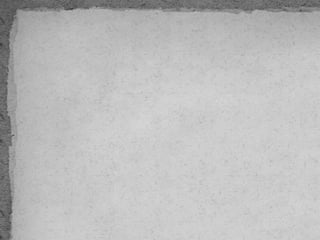

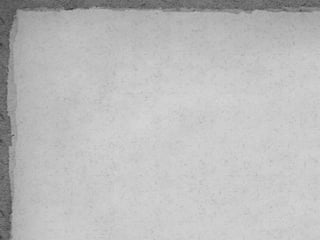
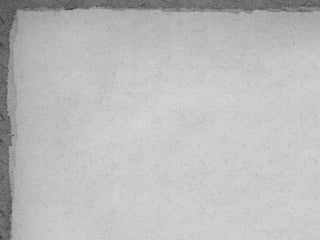
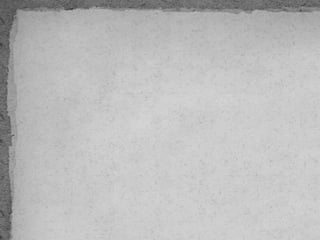
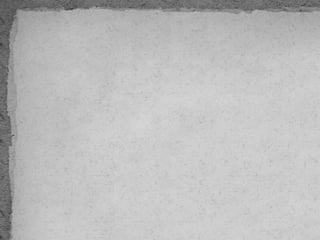
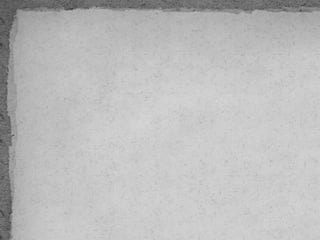
Ad
Recommended
20121114
20121114Keith Wang
?
¸Û¹É×òÈÕ¼ÌÐøϵø£¬ºãÖ¸µø241µã»ò1.1%£¬Ö÷ÒªÊÜÍâΧ¹ÉÊÐÆ£Èõ¼°ÃÀ¹ú²ÆÕþÐüѵÄÓÇÂÇÓ°Ïì¡£ÌÚѶ½ñÈÕ¹«²¼µÚÈþ¼¾Òµ¼¨£¬Èô±íÏÖÁ¼ºÃ£¬¹É¼Û¿ÉÄܽøÒ»²½ÉÏÊÔ300Ôª¹Ø¿Ú¡£ÃÀ¹É·½Ã棬µÀÖ¸Òò¾¼ÃÊý¾Ý¼°Å·Õ®ÎÊÌâµÄÓ°Ï죬ÔÚ¶ÌÆÚÄÚÈÔ¿ÉÄÜÔÚ12600µãÖÁ13600µãÇø¼ä²¨¶¯¡£vitaminas y vitamina DDenny Reyes
?
Este documento presenta el trabajo final de Denny Reyes Dur¨¢n para obtener su t¨ªtulo en la Benem¨¦rita Universidad Aut¨®noma de Puebla.Thriller films research
Thriller films researcherinmcginty
?
The document analyzes thriller film posters for the movies Taken, Inception, and Shutter Island. All three posters use dark, muted colors and imagery to reflect the thrilling nature of the films. They also prominently feature the film title and lead actors' names to attract audience attention. Taglines are included to give viewers an idea of the films' plots and draw them in. Together, these design elements in the posters effectively advertise the films and invite audiences to experience the suspense, mystery and intrigue.Question 7
Question 7erinmcginty
?
By comparing their preliminary magazine cover and contents page to the final version, the student learned several new skills. They learned techniques in Adobe Photoshop like using the pen tool to neatly cut around images. They also gained experience editing images by removing blemishes and altering lighting. Additionally, they improved the layout and design by adding stylistic elements such as drop shadows, varying the text formatting, and manipulating images. The final version included important magazine features that were missing originally such as the price, barcode, and more cover lines to inform readers of the content.Fallacies - McPherson
Fallacies - McPherson carliboom
?
The document defines fallacies and discusses different types of logical fallacies such as begging the question, red herrings, and hasty generalizations. It provides examples of each fallacy type and explains how fallacies are used in communication to appeal to emotion rather than reason and to win arguments. Logical fallacies distort arguments and mislead audiences rather than relying on valid reasoning.Potential Actors
Potential Actorserinmcginty
?
This document considers five potential actresses for roles in a horror film. Actor 1 would be ideal for the lead role but may better suit American settings. Actor 2 could represent a young, pretty teenager and be used as both a victim and hero through costume and makeup. Actor 3 lacks leading qualities but could play a supporting friend character who is conventionally killed early. Actor 4 may not seem fearful enough for a victim role but could play a confident character or possessed girl. Actor 5 has the look of a victim but may appear too old to be believable as a teenager. Acting ability is a concern for some of the actresses.Trailer Storyboards
Trailer Storyboardserinmcginty
?
The group created three initial storyboards for a film trailer but decided to change the plot after determining the original storyline would be unrealistic to film due to location difficulties and not having a suitable child actor. They concluded it would be more practical and effective to create a trailer based on characters their own age, as A Level Drama students confident in their own acting abilities.Horror films
Horror filmserinmcginty
?
This poster summary analyzes a horror film poster:
1) The ripped effect on the faces creates intrigue while hinting at the film's theme.
2) The tagline "I dare you to watch until our movie is done" directly addresses the audience and implies danger from the characters.
3) The poster challenges conventions by using a happy couple image contradicted by the ripped effect.Question 6
Question 6erinmcginty
?
I used Adobe Photoshop and InDesign software to construct my magazine. Photoshop allowed me to manipulate images and work with layers, making it easy to alter specific areas. It helped make my magazine look more professional by adding effects like drop shadows. InDesign let me layout my double page spreads and place images and text. I also used other software like ºÝºÝߣShare and Prezi for presentations and blogs to help plan my magazine construction. Through using these technologies, my skills with Photoshop in particular improved, allowing me to better edit images.Film mags research
Film mags researcherinmcginty
?
This document discusses the cover designs of three film magazines and how they relate to particular movies. The first magazine uses a shattered glass effect and gun prop on its cover to tie into the James Bond films. The second alters its logo to match the cityscape theme of Inception and advertises it as a "mind-blowing" issue. The third changes its masthead to flames matching Hellboy and promises an exclusive first look inside. All three covers prominently feature a single film while briefly mentioning others to attract audiences.Film mags research
Film mags researcherinmcginty
?
This document discusses the cover designs of three film magazines and how they relate to particular movies. The first magazine uses a shattered glass effect and gun prop on its cover to tie into the James Bond films. The second alters its logo to match the cityscape theme of Inception and promises a "mind-blowing" issue. The third changes its masthead to flames matching Hellboy and advertises an exclusive "first look" at the film. All three magazines design their covers around a single featured film to promote that movie to readers and encourage movie ticket sales.Hand Drawn Storyboard Draft
Hand Drawn Storyboard Drafterinmcginty
?
The document provides details on the hand drawn storyboard for a horror film trailer. It describes 15 potential shots for the trailer, including establishing the production company, introducing the two main characters, revealing the film's title through necklaces, showing an oncoming car accident, shots of a graveyard and crying friend visiting a grave, introducing a new best friend, and shots of a character being haunted by her dead friend. Camera shots, music, and editing details are provided to explain how each scene would be brought to life to effectively convey the plot within the short trailer.Construction development
Construction developmenterinmcginty
?
This PowerPoint presentation shows the evolution of a student's construction project through multiple drafts of the front cover, contents page, and double page spread. The student's design and construction improved as they became more familiar with the software over the course of the project. Versions of each element are displayed to demonstrate how they changed and developed during the construction period.Question 5
Question 5erinmcginty
?
To attract their intended audience of indie/alternative music fans, the document's author created a magazine covering current alternative artists like The XX and Alt-J on the cover. They also featured a female cover model based on research showing readers preferred female artists. The author addressed the audience by releasing the magazine monthly to provide regular new content, and priced it at ?2.90 which was within the popular price range identified in the research. The magazine's design, features, and article styles were tailored based on audience research findings to attract and engage the target readership.Magazine Construction: Image Manipulation
Magazine Construction: Image Manipulationerinmcginty
?
The document describes how an image was edited and manipulated to make it suitable for the cover of a film magazine. Key edits included:
1) Darkening a fake scar on the actress's head to make it seem more realistic.
2) Paling the actress's skin and reducing makeup patches to give her a lifeless look, as her character was supposed to be dead.
3) Adjusting eye makeup, eyebrows, and adding bloodshot eyes to give her a bold and harsh look fitting the horror theme.
4) Darkening the overall image and removing the actress's t-shirt logo to complete the manipulated cover image.Draft film posters
Draft film posterserinmcginty
?
The document summarizes the development of 6 draft film posters created by the author to promote their horror film. Each draft makes improvements based on feedback and aims to better represent the horror genre. Draft 1 includes initial ideas but needs refinement. Draft 2 uses prop necklaces but needs more elements. Draft 3 uses an actress photo but lacks horror elements. Draft 4 is improved with a close-up actress shot and blood makeup. Draft 5 adds cracked text effects and production logos. Draft 6 makes the image black and white for more contrast.Production logos
Production logoserinmcginty
?
This document discusses production logos used by movie studios and production companies. It provides examples of famous logos like 20th Century Fox, Paramount Pictures, and MGM. Production logos are usually seen at the beginning or end of trailers and take advantage of motion and sound. They help introduce the film and can indicate the type of film. Larger companies use 3D or moving logos while others are simpler. The document also discusses logo drafts created by a student for a horror film trailer, exploring different designs and layouts that relate to the production company name.More Related Content
Viewers also liked (10)
Question 6
Question 6erinmcginty
?
I used Adobe Photoshop and InDesign software to construct my magazine. Photoshop allowed me to manipulate images and work with layers, making it easy to alter specific areas. It helped make my magazine look more professional by adding effects like drop shadows. InDesign let me layout my double page spreads and place images and text. I also used other software like ºÝºÝߣShare and Prezi for presentations and blogs to help plan my magazine construction. Through using these technologies, my skills with Photoshop in particular improved, allowing me to better edit images.Film mags research
Film mags researcherinmcginty
?
This document discusses the cover designs of three film magazines and how they relate to particular movies. The first magazine uses a shattered glass effect and gun prop on its cover to tie into the James Bond films. The second alters its logo to match the cityscape theme of Inception and advertises it as a "mind-blowing" issue. The third changes its masthead to flames matching Hellboy and promises an exclusive first look inside. All three covers prominently feature a single film while briefly mentioning others to attract audiences.Film mags research
Film mags researcherinmcginty
?
This document discusses the cover designs of three film magazines and how they relate to particular movies. The first magazine uses a shattered glass effect and gun prop on its cover to tie into the James Bond films. The second alters its logo to match the cityscape theme of Inception and promises a "mind-blowing" issue. The third changes its masthead to flames matching Hellboy and advertises an exclusive "first look" at the film. All three magazines design their covers around a single featured film to promote that movie to readers and encourage movie ticket sales.Hand Drawn Storyboard Draft
Hand Drawn Storyboard Drafterinmcginty
?
The document provides details on the hand drawn storyboard for a horror film trailer. It describes 15 potential shots for the trailer, including establishing the production company, introducing the two main characters, revealing the film's title through necklaces, showing an oncoming car accident, shots of a graveyard and crying friend visiting a grave, introducing a new best friend, and shots of a character being haunted by her dead friend. Camera shots, music, and editing details are provided to explain how each scene would be brought to life to effectively convey the plot within the short trailer.Construction development
Construction developmenterinmcginty
?
This PowerPoint presentation shows the evolution of a student's construction project through multiple drafts of the front cover, contents page, and double page spread. The student's design and construction improved as they became more familiar with the software over the course of the project. Versions of each element are displayed to demonstrate how they changed and developed during the construction period.Question 5
Question 5erinmcginty
?
To attract their intended audience of indie/alternative music fans, the document's author created a magazine covering current alternative artists like The XX and Alt-J on the cover. They also featured a female cover model based on research showing readers preferred female artists. The author addressed the audience by releasing the magazine monthly to provide regular new content, and priced it at ?2.90 which was within the popular price range identified in the research. The magazine's design, features, and article styles were tailored based on audience research findings to attract and engage the target readership.Magazine Construction: Image Manipulation
Magazine Construction: Image Manipulationerinmcginty
?
The document describes how an image was edited and manipulated to make it suitable for the cover of a film magazine. Key edits included:
1) Darkening a fake scar on the actress's head to make it seem more realistic.
2) Paling the actress's skin and reducing makeup patches to give her a lifeless look, as her character was supposed to be dead.
3) Adjusting eye makeup, eyebrows, and adding bloodshot eyes to give her a bold and harsh look fitting the horror theme.
4) Darkening the overall image and removing the actress's t-shirt logo to complete the manipulated cover image.Draft film posters
Draft film posterserinmcginty
?
The document summarizes the development of 6 draft film posters created by the author to promote their horror film. Each draft makes improvements based on feedback and aims to better represent the horror genre. Draft 1 includes initial ideas but needs refinement. Draft 2 uses prop necklaces but needs more elements. Draft 3 uses an actress photo but lacks horror elements. Draft 4 is improved with a close-up actress shot and blood makeup. Draft 5 adds cracked text effects and production logos. Draft 6 makes the image black and white for more contrast.Production logos
Production logoserinmcginty
?
This document discusses production logos used by movie studios and production companies. It provides examples of famous logos like 20th Century Fox, Paramount Pictures, and MGM. Production logos are usually seen at the beginning or end of trailers and take advantage of motion and sound. They help introduce the film and can indicate the type of film. Larger companies use 3D or moving logos while others are simpler. The document also discusses logo drafts created by a student for a horror film trailer, exploring different designs and layouts that relate to the production company name.